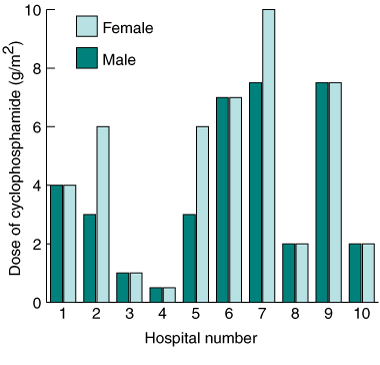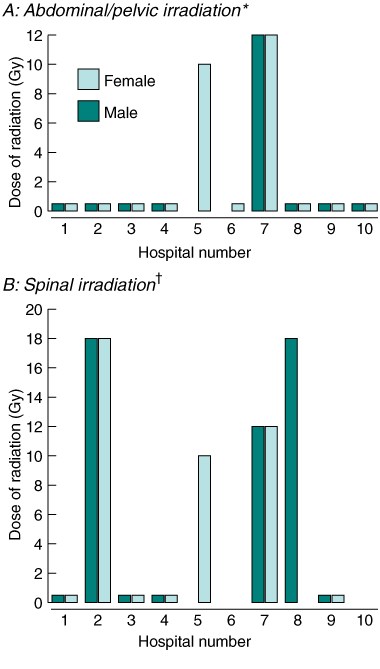About 750 children and adolescents are diagnosed with a cancer in Australia and New Zealand (ANZ) every year.1 Fortunately, recent advances in treatment, including the widespread use of co-operative clinical trials, aggressive multimodality therapies, and improved supportive care, have led to a remarkable improvement in cure rates. Today, about 75% of these patients are expected to be long-term survivors.2 Reintegration into society with a “normal” lifestyle and life experience is therefore one of the key aims of all paediatric oncology units. One aspect that continues to be a major concern in achieving this goal is fertility preservation.3
The risk of compromised fertility as a result of cancer therapy depends on multiple factors, including the age and sex of the patient, type of therapy, dose and duration of therapy, and type of tumour.4 Fortunately, it is now possible for young people seeking to preserve their fertility to consider a range of therapeutic interventions. These include the use of gonadotrophin-releasing hormone (GnRH) analogues during chemotherapy in an attempt to protect the ovaries, gamete collection and freezing for subsequent artificial insemination or in-vitro fertilisation (IVF), freezing of ovarian tissue in the hope that oocyte harvest might be possible in the future, and surgical transposition of ovaries out of radiation treatment fields. However, many of these techniques remain experimental with, as yet, unproven benefits.5 We aimed to establish the extent to which paediatric oncology units throughout ANZ are addressing the issue of fertility, and to determine whether the services being provided optimise the chances of its preservation. We also compared the Australian and New Zealand situation with recently published North American practices and current recommendations for best practice.
In December 2005, a cross-sectional email questionnaire was sent out to the 13 paediatric centres providing specialist oncology care in ANZ (Box 1).
We used a 17-item questionnaire based on a questionnaire previously administered to paediatric oncology centres in North America in the year 2000.6 It covered: fertility preservation services, including counselling offered; doses of well described gamete-toxic therapies at which a discussion of fertility preservation options is triggered; and presence and use of guidelines.
Sperm conservation: This was offered to postpubertal males in all centres (Box 2). Options for gamete collection included ejaculate (12 centres; 100%), epididymal aspirate (4 centres; 33%) and testicular biopsy (4 centres; 33%). Established links with a sperm collection and preservation service existed in 11 of the 12 centres (92%). Sperm preservation had been offered to males who had not completed sexual development in five centres (42%). Units were more likely to offer sperm preservation to males with lymphomas and sarcomas. This is probably partly a reflection of the age distribution of the disease incidences (Box 3). The total anticipated cumulative dose of the alkylator cyclophosphamide at which centres elected to offer fertility preservation in males varied from any at all to 7.5 g/m2 (Box 4). Similarly, the total anticipated cumulative dose of radiation triggering discussion about sperm preservation ranged from any radiation up to 12 Gy for abdominal/pelvic sites, and from any radiation up to 24 Gy for spinal irradiation (Box 5).
Oocyte/ovarian tissue conservation: This had been offered to postpubertal females in 10 centres (83%). Options included ovarian freezing (eight centres; 67%) and ovarian transposition (five centres; 42%), with five centres having used both procedures. No centre had offered oocyte freezing or IVF and embryo freezing (the oldest patients were adolescents and none were in stable, mature relationships). One centre offering ovarian freezing did not have an established link with a fertility preservation service at the time. Five centres had offered fertility preservation to females who had not completed sexual development. Lymphomas, sarcomas and germ cell tumours were the tumour types for which centres most commonly offered oocyte preservation (Box 3). The total anticipated cumulative dose of the alkylator cyclophosphamide at which centres elected to offer fertility preservation to female patients varied from any to 10 g/m2 (Box 4). Similarly, the total anticipated cumulative dose of radiation triggering a discussion of fertility preservation ranged from any radiation up to 12 Gy for abdominal/pelvic sites, and from any radiation up to 24 Gy for spinal irradiation (Box 5).
This is the first report of clinical practice with regard to sperm and oocyte preservation in children undergoing cancer treatment in ANZ. Given the high participation rate and the fact that over 90% of children (aged less than 15 years) newly diagnosed with cancer in ANZ are treated at one of the participating units,7 the results are likely to be very accurate. However, not all treating oncologists were surveyed, and this may have influenced the results, particularly at the larger centres where individual physician preference may be a factor. A component of the variation observed may also be explained by some smaller units choosing to only offer less intensive treatments, and hence not requiring fertility preservation interventions. Despite these issues, the opportunity for discussion about fertility and access to services is inconsistent.
While the variation in practice is quite striking, it is considerably less than previously reported in North America in 2000.6 In particular, all ANZ centres offered fertility preservation to postpubertal males, and a much larger proportion of centres are addressing the difficult issues of female fertility preservation. COG, the world’s largest paediatric oncology collaboration, recently published long-term follow-up guidelines for survivors of child, adolescent and young-adult cancers, including a comprehensive review of the risk factors for infertility (http://www.childrensoncologygroup.org). The current recommendations for consideration of fertility preservation are for patients likely to receive a cumulative dose equivalence of:
7.5 g/m2 cyclophosphamide;
1–3 Gy for abdominal/pelvic irradiation in males or 6–10 Gy in females; or
24 Gy for spinal irradiation
Although most ANZ centres are members of COG, no centre identified the COG guidelines as a source of guidance. In fact, many units had a lower threshold (any exposure) for offering fertility preservation than current evidence suggests is necessary.8-11 Interestingly, despite data on the safety and efficacy of GnRH analogues in adolescents being very limited,12 two centres were using such agents outside the setting of a clinical trial.
Relatively fewer centres are undertaking fertility preservation procedures in patients who have not completed their sexual development. This is despite recent evidence that successful pregnancies have resulted from the use of sperm extracted from the epididymis or testis in pubertal males before the onset of first ejaculation.13 On the other hand, collection of gametes in pre-ovulatory females has not led to subsequent restoration of fertility to date. However, several births have been reported after ovarian tissue grafting in women of reproductive age,14,15 opening up difficult legal and ethical issues around the experimental nature of this procedure.
1 Participating Australian and New Zealand paediatric oncology centres
The Children’s Hospital at Westmead, Sydney, New South Wales, Australia
John Hunter Hospital, Newcastle, New South Wales, Australia
Mater Children’s Hospital, Brisbane, Queensland, Australia
Monash Medical Centre, Melbourne, Victoria, Australia
Princess Margaret Hospital for Children, Perth, Western Australia, Australia
Royal Children’s Hospital, Brisbane, Queensland, Australia
Royal Children’s Hospital, Melbourne, Victoria, Australia
Royal Hobart Hospital, Hobart, Tasmania, Australia
Starship Children’s Hospital, Auckland, New Zealand
Sydney Children’s Hospital, Randwick, Sydney, New South Wales, Australia
Wellington Children’s Hospital, Wellington, New Zealand
Women’s and Children’s Hospital, Adelaide, South Australia, Australia
2 Existing practice for sperm and ova conservation
3 Sperm and ova conservation by tumour type*†
* Responses from 11 centres in Australia and New Zealand (one returned survey left unanswered). † Responses from 60 centres in North America (nine returned surveys left unanswered). |
|||||||||||||||
- John A Heath1
- Catherine J Stern2
- 1 Children's Cancer Centre, Murdoch Children's Research Institute, Royal Children's Hospital, Melbourne, VIC.
- 2 Fertility Service and Melbourne IVF, Royal Women's Hospital, Melbourne, VIC.
Dr Heath holds a National Health and Medical Research Council (NHMRC) Health Professional Grant. We thank those who completed the survey.
None identified.
- 1. Heath JA. Monitoring after childhood cancer — an update for GPs. Aust Fam Physician 2005; 34: 761-767.
- 2. Hawkins MM. Long-term survivors of childhood cancers: what knowledge have we gained? Nat Clin Pract Oncol 2004; 1: 26-31.
- 3. Zebrack BJ, Casillas J, Nohr L, et al. Fertility issues for young adult survivors of childhood cancer. Psychooncology 2004; 13: 689-699.
- 4. Muller HL, Klinkhammer-Schalke M, Seelbach-Gobel B, et al. Gonadal function of young adults after therapy of malignancies during childhood or adolescence. Eur J Pediatr 1996; 9: 763-769.
- 5. Revel A, Schenker J. Ovarian tissue banking for cancer patients: is ovarian cortex cryopreservation presently justified? Hum Reprod 2004; 19: 14-19.
- 6. Glaser A, Wilkey O, Greenberg M. Sperm and ova conservation: existing standards of practice in North America. Med Ped Oncol 2000; 35: 114-118.
- 7. Mitchell AE, Scarcella DL, Rigutto GL, et al. Cancer in adolescents and young adults: treatment and outcome in Victoria. Med J Aust 2004; 180: 59-62. <eMJA full text>
- 8. Relander T, Cavallin-Stahl E, Garwicz S, et al. Gonadal and sexual function in men treated for childhood cancer. Med Pediatr Oncol 2000; 35: 52-63.
- 9. Kenney LB, Laufer MR, Grant FD, et al. High risk of infertility and long-term gonadal damage in males treated with high dose cyclophosphamide for sarcoma in childhood. Cancer 2001; 91: 613-621.
- 10. Sklar CA, Robison LL, Nesbit ME, et al. Effects of radiation on testicular function in long-term survivors of childhood acute lymphoblastic leukemia: a report from the Children Cancer Study Group. J Clin Oncol 1990; 8: 1981-1987.
- 11. Bath LE, Hamish W, Wallace B, et al. Late effects of treatment of childhood cancer on the female reproductive system and the potential for fertility preservation. Br J Obstet Gynaecol 2002; 109: 107-114.
- 12. Pereyra Pacheco B, Mendez Ribaz JM, Milone G, et al. Use of GnRH analogs for functional protection of the ovary and preservation of fertility during cancer treatment in adolescents: a preliminary report. Gynecol Oncol 2001; 81: 391-397.
- 13. Watkins W, Nieto F, Bourne H, et al. Testicular and epididymal sperm in a microinjection program: methods of retrieval and results. Fertile Steril 1997; 67: 527-535.
- 14. Donnez J, Dolmans MM, Demylle D et al. Livebirth after orthotopic transplantation of cryopreserved ovarian tissue. Lancet 2004; 364: 1405-1410.
- 15. Meirow D, Levron J, Eldar-Geva T, et al. Pregnancy after transplantation of cryopreserved ovarian tissue in a patient with ovarian failure after chemotherapy. N Engl J Med 2005; 353: 318-321.







Abstract
Objective: To establish the extent to which sperm, oocyte and gonadal tissue collection and storage is offered to children newly diagnosed with cancer.
Design, participants and setting: A cross-sectional survey of all paediatric oncology services in Australia and New Zealand (ANZ) in December 2005.
Main outcome measures: Sperm, oocyte and gonadal tissue collection and storage practices at paediatric oncology services; comparisons with recently published North American practices and with current recommendations for best practice.
Results: 12 of the 13 centres (92%) completed the survey. All centres offered sperm preservation, but only 10 (83%) offered oocyte/ovarian tissue preservation. Two centres were using gonadotrophin-releasing hormone analogues for fertility protection in postpubertal females. Five (42%) had offered fertility preservation to patients before the completion of their sexual development. All centres were more likely to offer sperm preservation than oocyte preservation for any given disease. The most common diseases for which conservation was offered were lymphomas and sarcomas. The anticipated cumulative dose at which centres elected to offer fertility preservation varied widely, both for the alkylator cyclophosphamide (any to 10 g/m2) and for abdominal/pelvic irradiation (any to 12 Gy) and spinal irradiation (any to 18 Gy). Fertility counselling was offered in a variety of settings by nine (75%) of the centres. Despite 11 centres (92%) agreeing that fertility preservation guidelines would be helpful, only two (17%) had guidelines in place.
Conclusions: There are inconsistencies in the indications for and methods of gamete conservation in paediatric oncology centres throughout ANZ. Variations in practice on a background of unresolved medical, legal and ethical issues suggest the development of guidelines would be helpful.